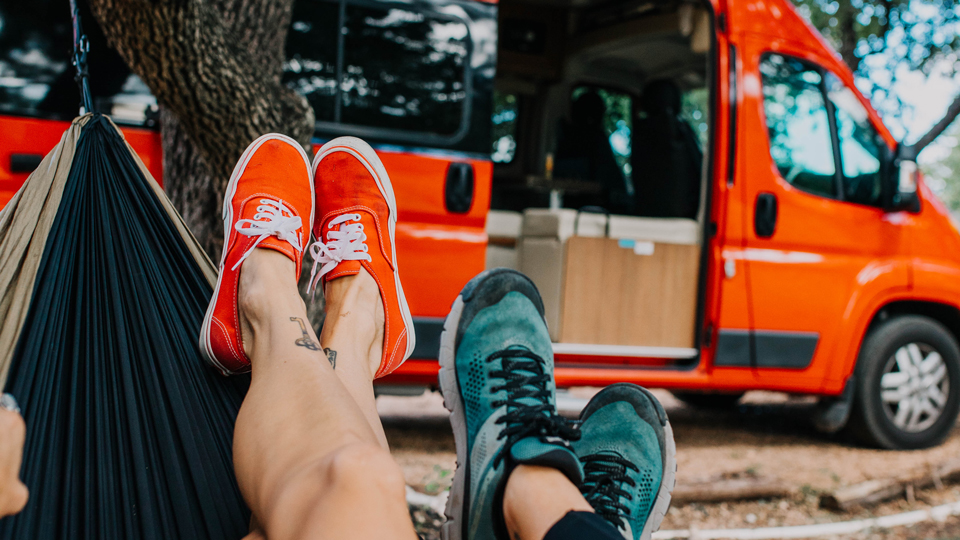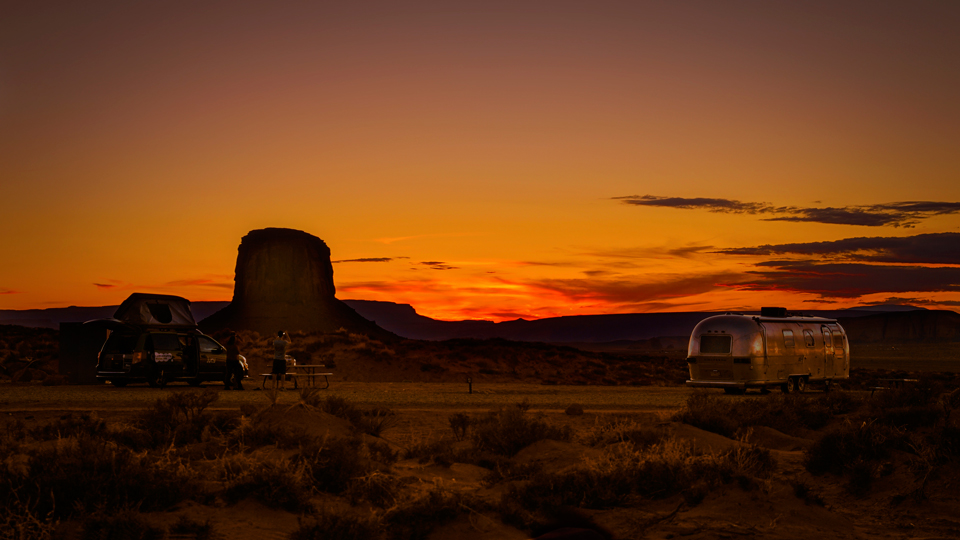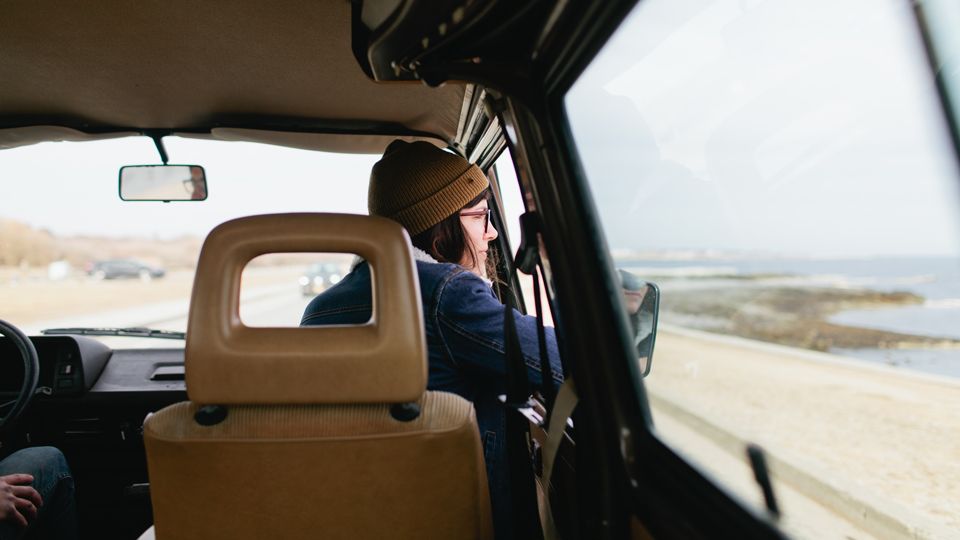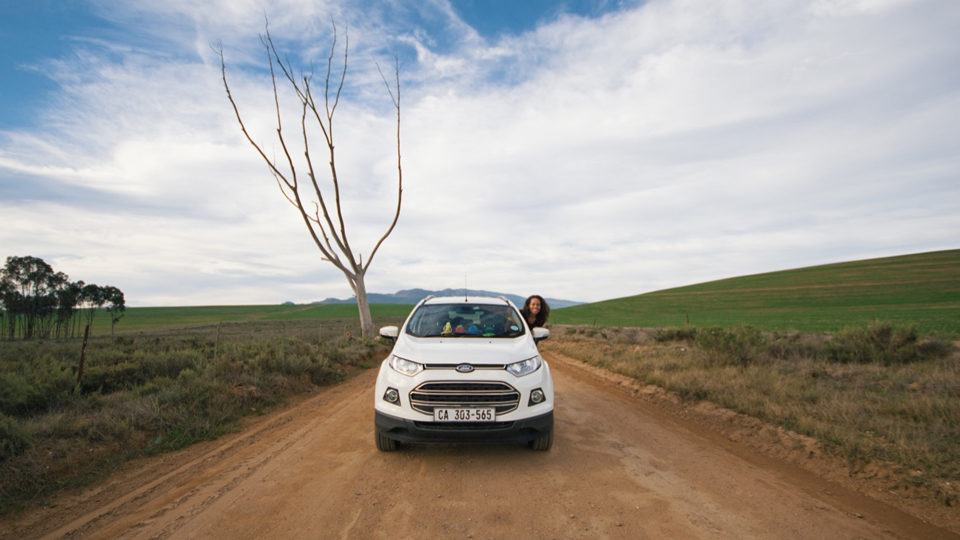
If you're itching to get behind the wheel of an RV and embark on the Great American road trip (or even a weekend in the wilderness), there are some things to know if it's your first go at it.
It's no secret that interest in renting recreational vehicles (RVs) have soared this year. In fact, their popularity keeps climbing. If you're going to travel back in the past, it might as well be on four wheels that doubles as a place to sleep.
But there are some things to familiarize yourself with first before renting an RV for a month-long adventure or even a weekend.
Otherwise, you might realize too late that the Class B campervan you've booked has nowhere near enough space for you and your four closest friends, or wake at the crack of dawn to no onboard coffee maker. 😭😭
Start by checking out these rental sites
First things first. How to even find an RV?
CruiseAmerica rents out a fleet custom-manufactured RVs. They're the ones you'll often see meandering the roads of national parks, their exteriors emblazoned with the phone number 800-RV-4-RENT and an image of a place like Badlands or Yellowstone.
I don't know for sure, but imagine this is the company your grandparents swear by. It has locations across the U.S.
Another common option is RVTrader. They've been around a while and are largely known for helping dealerships and private owners buy and sell RVs, but now offer rentals. Most can be picked up and dropped back off at a dealership near your nearest location.
For the Airbnb of RVs, there's Outdoorsy, a peer-to-peer RV community. This means that you can go on the site, find the RV you're interested in, and then contact its owner directly. You might exchange a few emails, and then decide whether to pick up the vehicle at the owner's place or an agreed upon location, or even have the owner bring it to you.
One of the coolest things about Outdoorsy is that, depending on the RV chosen, the owner will sometimes offer to deliver it directly to your destination and then come and retrieve it when you're done (like this Airstream trailer).
Basically, all you have to do is get yourself there and back, completely eliminating any fear of getting behind an RV wheel.
Know the types of motorhomes and trailers
Now it’s time to start shopping. There are so many types of motorhomes and trailers out there in the world, so don't just go for any old thing. The size and style you choose should depend as much upon your personality as it does your needs.
If that means embracing an inner vintage Airstream, then so be it!

Ask questions. (Martin Pettitt / Flickr)
There are three main types of motorhomes, which fall into different classes, that are usually available for renting:
Class A: Consider these a luxury home on wheels. There might be a bedroom in the back, a full kitchen for whipping up gourmet meals, and enough room to fit six to eight people.
These things look like beasts on the roadways, yet are susceptible to even the slightest winds while driving. This is due to their massive size, which can measure up to 40+ feet in length.
Class B: The smallest and most fuel-efficient of the three, these vehicles average about 21 to 23 feet in length. They don't always have showers or even toilets! but typically have space for a propane stove and a comfy bed.
Though when it comes to driving, Class Bs are the easiest to maneuver along roadways. They're also akin to operating an oversized van, so if you're a solo traveler, a couple with a pooch heading out on a weekend jaunt, this is the way to go.
Class C: The perfect middle ground. Class Cs typically run between 20 to 30 feet long and are the most family friendly. Depending on the exact size, they can fit anywhere between four to eight people.
They often have cool features like a bed over the driving cab (aka the place where the driver sits), convertible dining room tables that transform into sleeping space, and slide outs that extend at the push of a button (or sometimes using a pump or hinge) to enlarge the living area.
In addition to these, other RVs include things like tricked-out campervans and “skoolies,” which are renovated school buses. There are also pull-along trailers ranging from vintage Airstreams to pop-ups, which are literally fold down into a size that's easily towable and then “pop-up” once you're ready to camp. Another option is a compact teardrop-shaped trailer. It provides all the basic amenities but with minimal fuss.
Pretend like you’re renting a house
Do you prefer hotel rooms to camping? Love to cook? Are you looking for a home away from home, or simply a place to lay your head?
Are you thinking about boondocking (i.e. camping without access to electrical hook-ups, sewage, or water) en route to a dedicated RV park, or driving straight to a national park and setting up shop? Will there be restroom and shower facilities where you're heading? How about a general store for necessities?
Consider how long and far you're planning to go, and where (at your destination and along the way) you'll be staying.

Consider the destination. (PiConsti / Flickr)
Each RV has its own set of pluses and minuses. One might have every perk imaginable indoors but also be seemingly impossible to park because of its size; while another may have the portable stove, French press, and solar power you're looking for but no toilet. Decide what it is you really need, and go from there.
In fact, treat each rental like an episode of HGTV's House Hunters and request a walk-through. This will be your (temporary) home, after all! Ask questions.
If it has a shower, what's the water pressure like? Are there any sheets and pillows onboard, or do you have to bring your own? What about a bike rack? Remember, you'll likely want to be mobile at your destination without having to move the RV each and every time you need something.
A pair of bicycles, a towable scooter, or the ability to detach a trailer before you go exploring in the car or jeep just might be the ticket.
Before hitting the road...
It may seem common sense, but it bears iterating: The larger the RV, the tougher it's going to be to maneuver along the road. It's not a car, so you will have to think about it differently.

Hitting the open road. (Joe St.Pierre / Flickr)
This means leaving a wider berth when passing, and keeping a greater distance between vehicles while driving, because braking takes longer, and other things that may not be necessarily obvious immediately.
If it's your first time renting one, start small. Consider heading out for just a night or two at a nearby locale to test the waters, and seeing what works and what doesn't. From here, it's nothing but open road.



